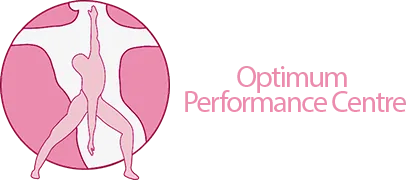Low Intensity Laser Therapy (LILT) utilizes superluminous and laser diodes to irradiate abnormal tissue with photons; these particles of energy are absorbed by a variety of molecules resulting in the conversion of light into biomechanical energy. Multiple positive physiological responses are thereby initiated and normal cell morphology and function are restored. This process is curative and eliminates symptoms (i.e. pain, edema, etc.)
What is BioFlex?
BioFlex is a highly sophisticated therapeutic modality that
combines the potential benefits of low intensity laser with super
luminous diodes for the effective treatment of many medical disorders.
Developed and engineered by Meditech International Incorporated, BioFlex
represents the decade's most significant technological advancement in
laser therapy.
How long does a treatment take?
Treatments are typically 30 minutes to 1 hour in duration, depending on the condition being treated.
How many treatments are required?
The number of treatments will depend on the chronicity and the extent of the pathology involved. Based on the genetic makeup of the cells, an individual's response to LILT will vary to some degree. A recent clinical review, including 1,000 consecutively treated patients, reveals the average number of treatments to be 9.4.
How does Low Intensity Laser Therapy compare with other conventional treatments?
For many years, rehabilitation therapies -- including
ultrasound, interferential current and TENS -- have been used
extensively throughout the world to treat pain and stimulate the healing
processes. Unlike LILT, however, the healing effects of these
treatments have been disappointing as they only modulate symptoms. In
contrast, LILT is able to influence the pathology directly at the
cellular level, resulting in therapeutic benefits that are more profound
and generally curative. At best, alternative therapies act as
counter-irritants, creating a transient increase in circulation and the
release of endorphins, providing only temporary symptomatic relief.

Who would benefit from Low Intensity Laser Therapy?
LILT is recommended as the treatment of choice for
sufferers of musculoskeletal conditions in rehabilitation,
physiotherapy, and sports medicine. Specifically, it can effectively
treat many medical conditions, including acute injuries, degenerative
disorders and wound healing.
What are the side effects associated with Low Intensity Laser Therapy?
Unlike most pharmaceutical solutions and other therapeutic options, LILT is non-toxic, non-invasive, and in over 1 million individual treatments, no significant adverse effects have been noted.
What about the deleterious effects of radiation?
LILT does produce radiation, as
photon energy, in the visible and near infra-red regions of the
electromagnetic spectrum. Worldwide research, conducted over the past
thirty years indicates that normally functioning cells are not adversely
affected by this type of irradiation.
Note: Unlike other forms of radiation, i.e. x-ray, etc., this process is beneficial rather than harmful to tissue.
Where is BioFlex in use today?
Across Canada, Europe, South America and Asia, BioFlex is
being used by an increasing number of chiropractors, physiotherapists
and physicians. In the 8 years that the therapy has been available, more
than 100 million patients have received successful treatment with
BioFlex and its predecessor units. The Toronto Raptors Basketball Club,
The Toronto Maple Leafs, as well as the Toronto Blue Jays Baseball Club,
have used BioFlex for their injured players with excellent results.
In addition, many athletes from golf, hockey, and tennis are enjoying the benefits of the therapy.
Are there any contraindications to Low Intensity Laser Therapy?
If you are taking any highly photosensitive or light sensitive medication and have been told by your doctor or pharmacist to avoid direct sun or tanning beds, you should not have LILT. Certain antibiotics, water pills, anti-inflammatory medication, sleeping pills, acne, or psychiatric medications or chemotherapy can be highly photosensitive.
If you are pregnant and in your first trimester, you should not receive LILT on the trunk area of your body. However, you may receive LILT on your extremities (i.e. arms, legs)
